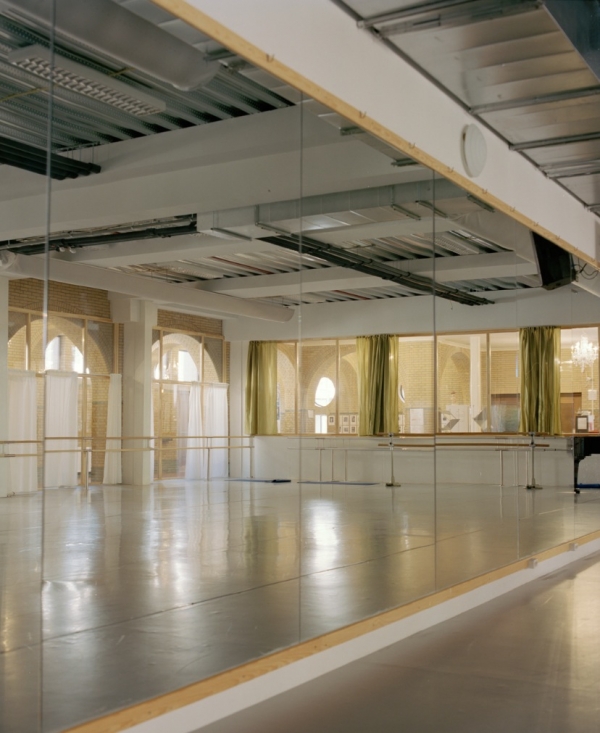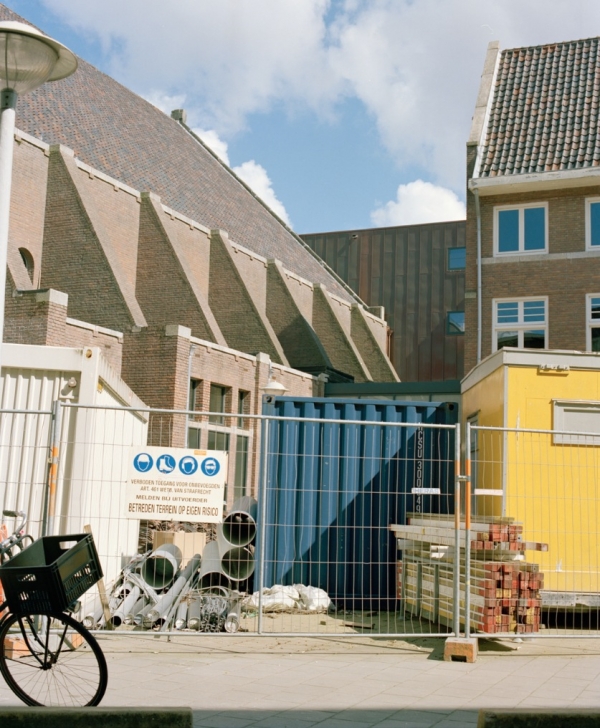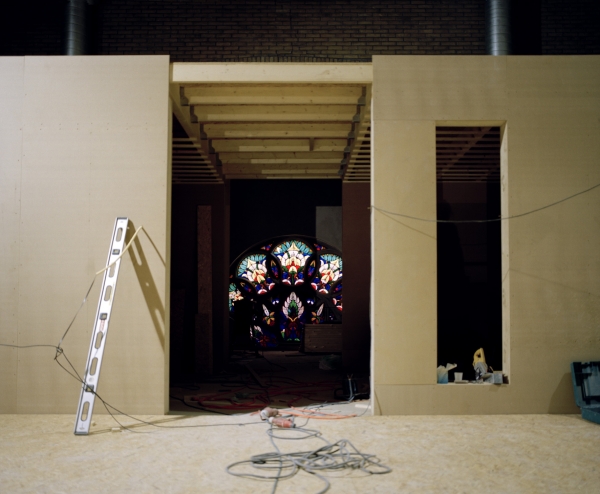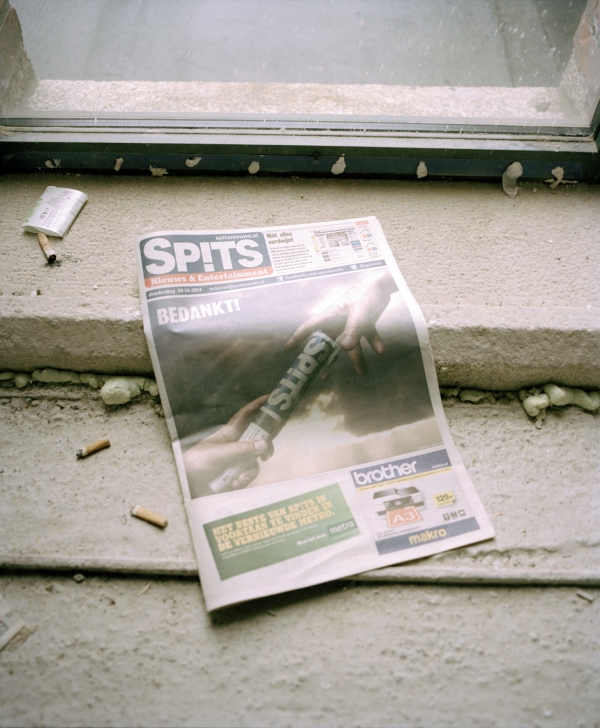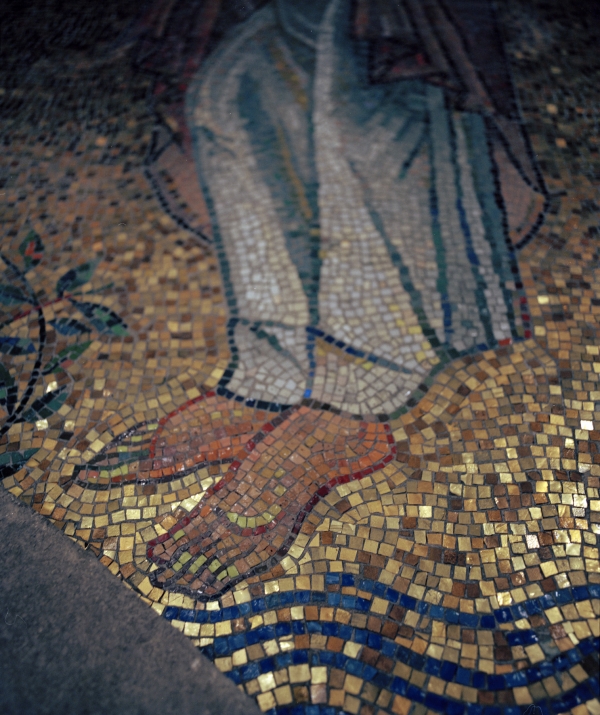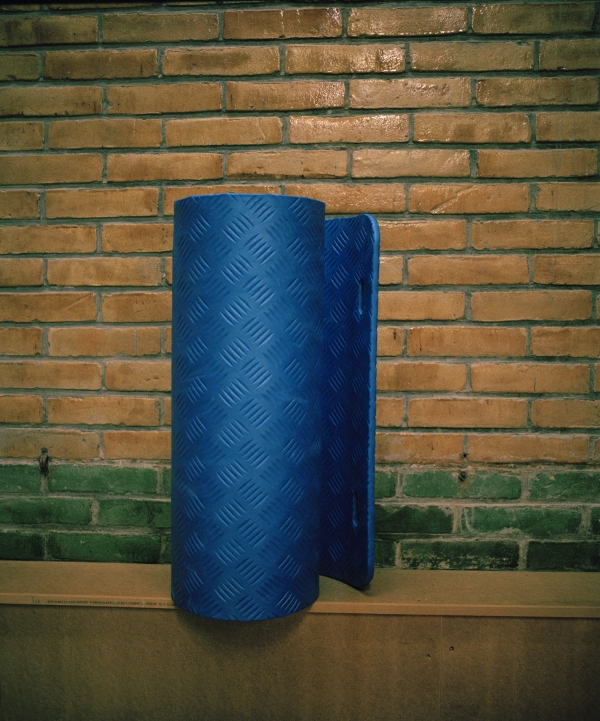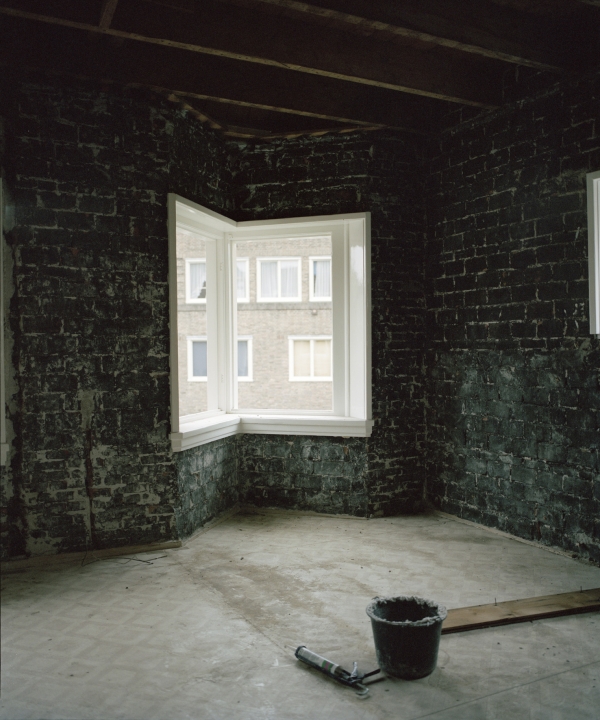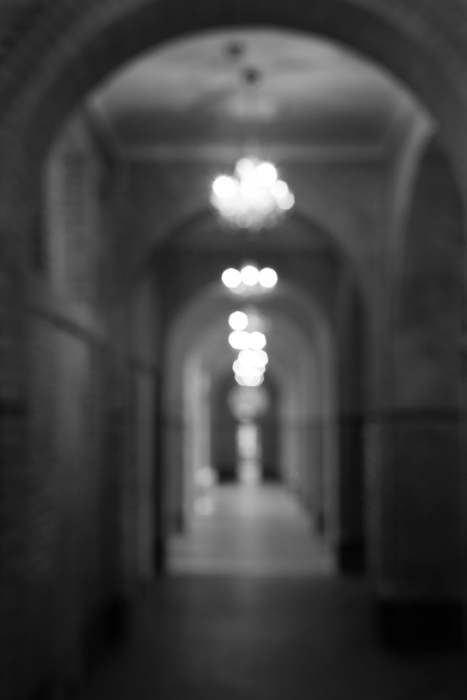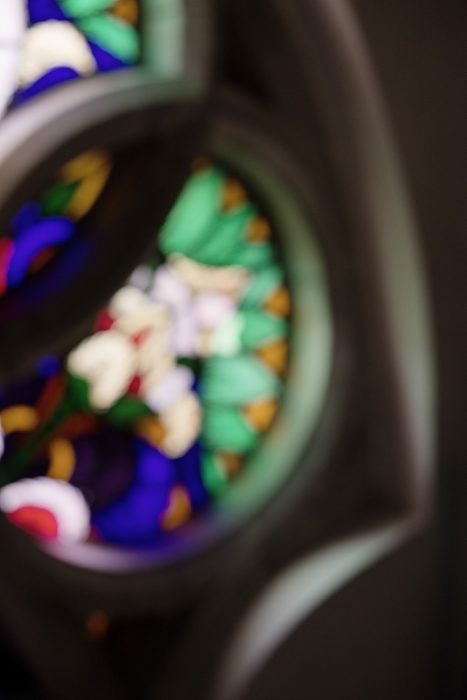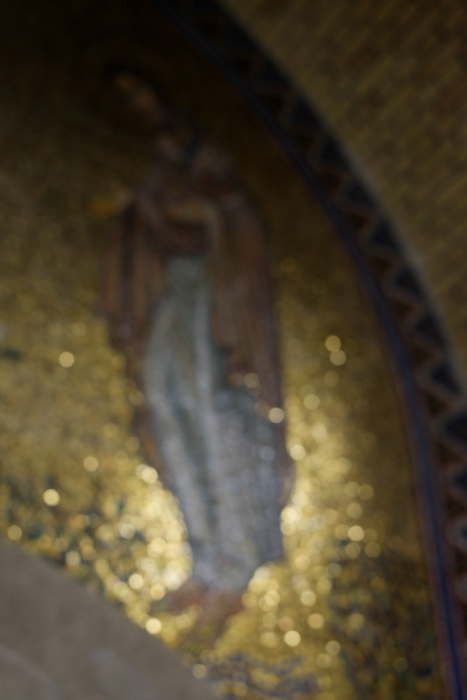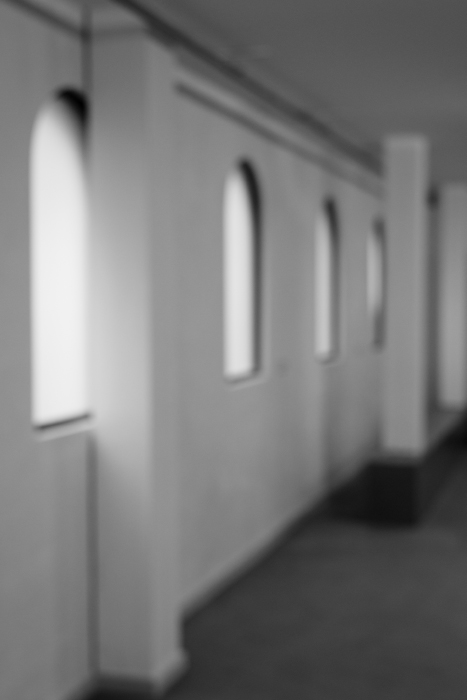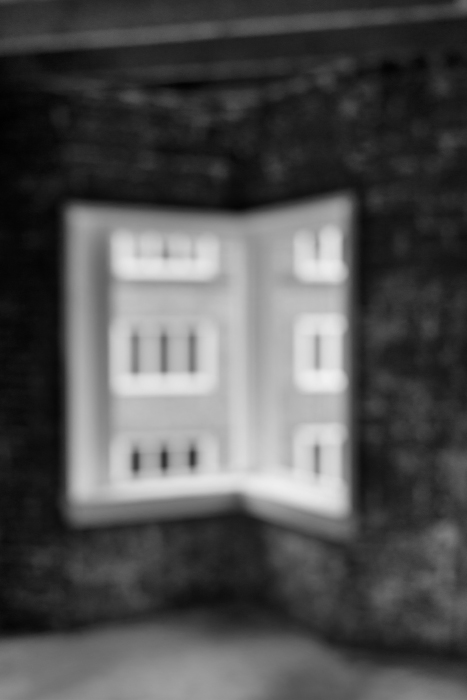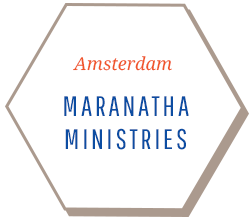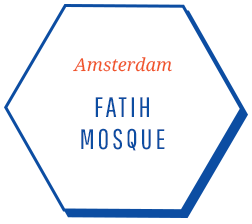SELF-IMPOSED ICONOCLASM?
“I am very angry about what they have done”, Mrs Leenstra says, standing in front of her old church which now houses the Chassé Dance Studios. Mrs Leenstra grew up in the neighbourhood in the 1940s. She points to a sculpture depicting two fish next to the main entrance. There used to be three fishes here, she explains, but the middle one has been removed recently by request of the former Catholic owner of the building, because three fishes can be taken as a Christian symbol. “I used to touch these fish every time I walked by”, Mrs Leenstra says.
Don’t get her wrong, she doesn’t mind the conversion of the church into dance studios. But she is disturbed by some of the minor changes that have been made to the building. The removal of the fish isn’t the only change that has taken place. Inside the converted church, stained glass was removed, crosses on the walls were filled with putty and a mosaic portraying Christian imagery was covered by a plaster wall.
The leadership of the former parish commissioned these adaptations, based on the policy of the Diocese that abandoned Catholic churches should be “unchurched” as much as possible. The Diocese wants a clear distinction to be made between functioning churches and churches that have been converted for new purposes.
The mosaic mentioned above has been a bone of contention for some time. Contrary to the Diocese, Larry Balkissoon, the new owner of the building wanted to preserve as much as possible from the original church. He particularly wanted to preserve the mosaic, because he thought it would inspire the children who came here to dance. However, church officials, who were apprehensive of the watering down of Catholic identity and symbols in today’s secular culture, would not back down – the mosaic had to be concealed from sight.
These ballet shoes are from the lost and found collection of the Chassé Dance Studios, located in the former Catholic Chassé Church. Since these dance studios opened their doors in 2014, they have become an increasingly lively hub for children taking classes, dance students, (semi-)professional dancers and international choreographers, who come together here to pursue their passion for dance.
TIMELINE CHASSÉ DANCE STUDIOS
2014
2014
The dance studios opened in August 2014. The conversion meant a major transformation of the interior of the church building. Yet, the exterior has remained largely unchanged. Chassé church is now a lively hub attracting dancers, teachers and choreographers. Neighbourhood residents are generally happy with the new use of the building, although some worry about the potential nuisance that the hotel and café clientele might cause. The construction process of the hotel and café are still ongoing today.
2012
2012
Lenny Balkissoon, an entrepreneur and former dancer, bought the church building in 2012. He felt it was important to preserve its function of bringing people together. He decided to convert the former church and vicarage into a complex with eight dance studios, a hotel, a café, a gym/theatre hall and a health centre.
2007
2007 - 2011
In 2007 the church building was bought by a housing cooperation, Ymere, and was officially deconsecrated. As a result of neighbourhood advocacy, the city council decided to enlist the church as a monument. This meant that Ymere could not demolish the building. Its plans to convert the church into an apartment block never materialised due to the financial crisis. In the meantime, the building remained vacant. It was used temporarily by artists, who had to leave when the parish judged their art to be offensive.
1998
1998 – 2007
The parish board wanted the building to be demolished to prevent possible “unworthy” re-use in the future. However, some neighbourhood residents were strongly opposed to the demolition of the church, and set up a committee to prevent this from happening. As one of its members told the newspaper Het Parool, demolishing the church amounts to “demolishing your history”.
1998
1998
The Chassé church became disused due to the declining number of practising Catholics in the neighbourhood. The local population had changed and now included Turkish and Moroccan migrants and their children. Later it also attracted young urban professionals. The building was left vacant for many years. It was used by squatters for a time, and later as a shelter for refugees. Some parishioners continued to meet in the vicarage.
1926
1926
A new Catholic church, designed by K.P. Tholens and devoted to “Our Lady of Perpetual Help”, was constructed as an integral part of De Baarsjes, a new neighbourhood in West Amsterdam. The Chassé Church, as it was popularly known, was a big church and part of a Catholic enclave that also included a vicarage, schools and a nunnery. Kees Fens, a well-known literary critic and author who grew up next to the church in the 1930s, has noted that the neighbourhood was characterized by an “intense churchly engagement” and by the “unavoidability” of faith.


